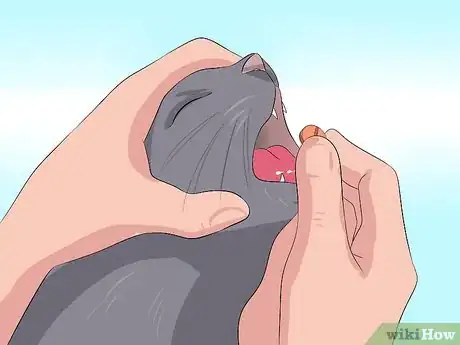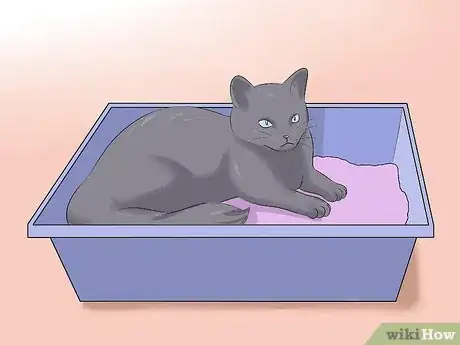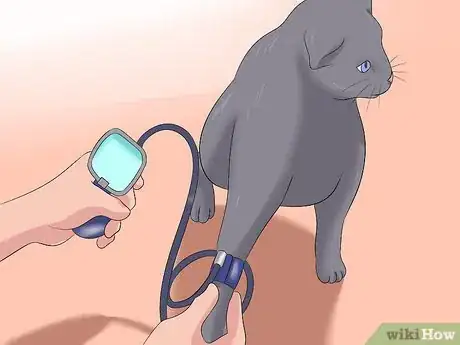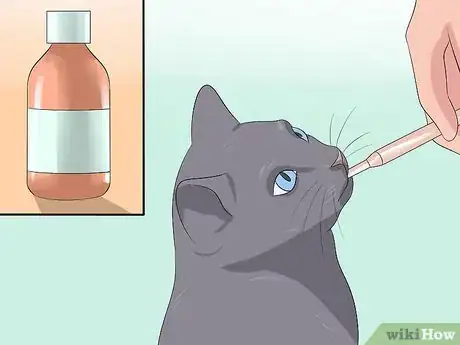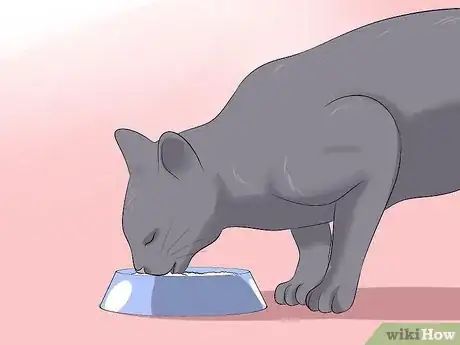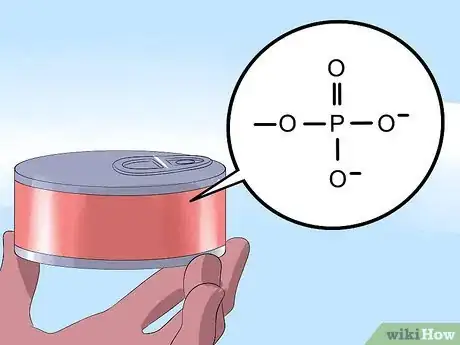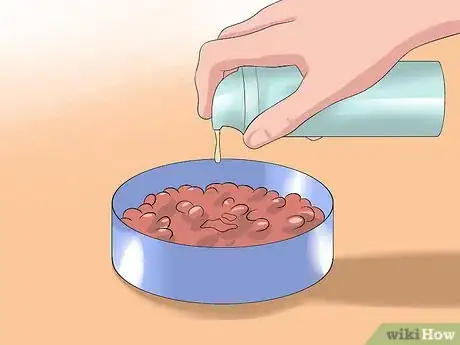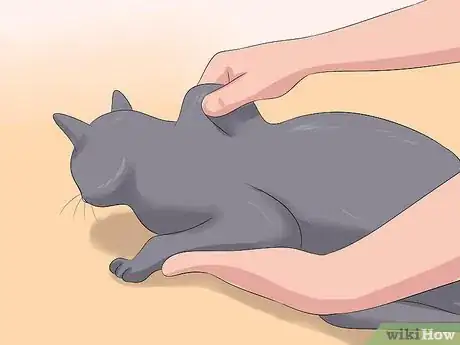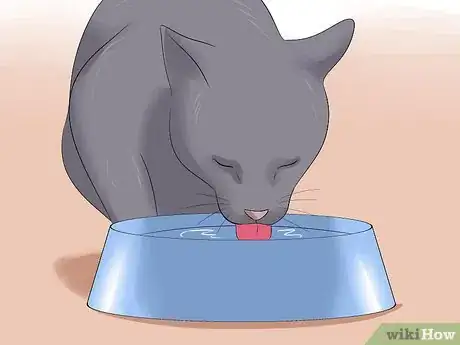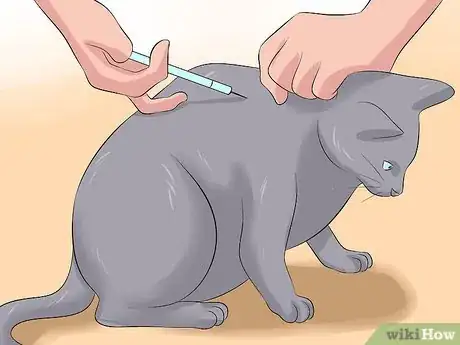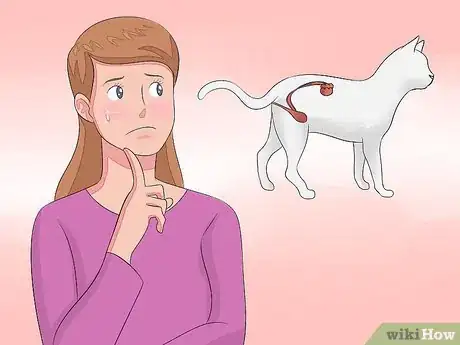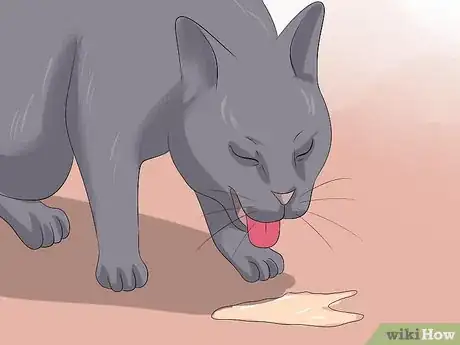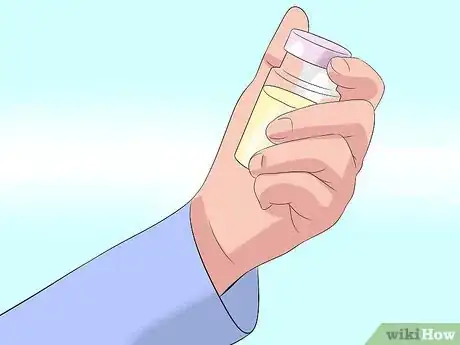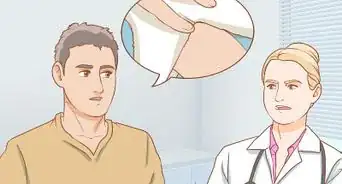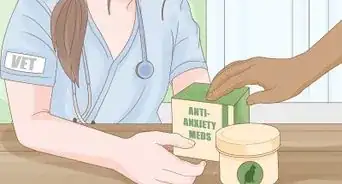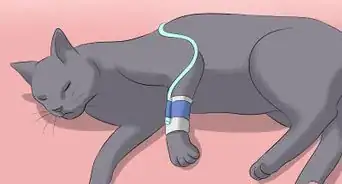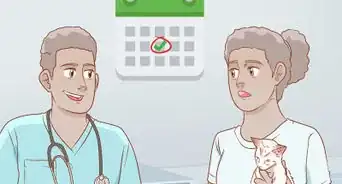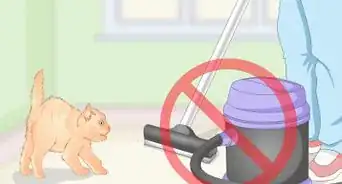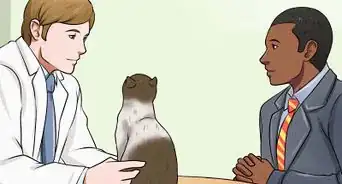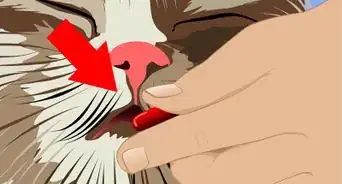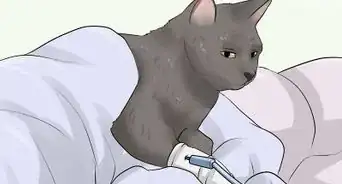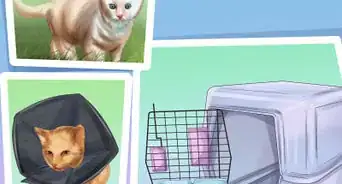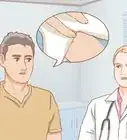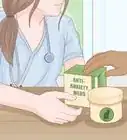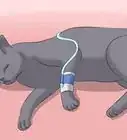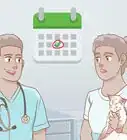This article was co-authored by Pippa Elliott, MRCVS. Dr. Elliott, BVMS, MRCVS is a veterinarian with over 30 years of experience in veterinary surgery and companion animal practice. She graduated from the University of Glasgow in 1987 with a degree in veterinary medicine and surgery. She has worked at the same animal clinic in her hometown for over 20 years.
wikiHow marks an article as reader-approved once it receives enough positive feedback. In this case, 95% of readers who voted found the article helpful, earning it our reader-approved status.
This article has been viewed 31,099 times.
Kidney disease is a common problem in older cats and infrequent in younger cats. The majority of cats respond well to treatment, and while it is a matter of "control" rather than "cure", a significant increase in life expectancy is likely if an appropriate treatment plan is put into place.
Steps
Treating Kidney Disease with Medical Intervention
-
1Use ACE inhibitors to prolong the life of the kidneys. Kidney disease leads to a vicious circle whereby there is less functional tissue doing more work, which speeds up the kidney's deterioration. Drugs called ACE inhibitors, such as benazepril (Benefortin), reduce the blood pressure gradient across the kidney, which reduces one of the risk factors for deterioration. They work by dilating the arteries leading into the kidney so that the local blood pressure falls and is less likely to cause damage.[1]
- The use of ACE inhibitors increases the survival times of cats with mild to moderate kidney disease. The dose is generally 0.25 to 0.5mg/kg once daily by mouth. This is equivalent to half a 5 mg tablet once daily.[2]
-
2Monitor the cat for bladder infections. Concentrated urine is a natural antiseptic and produces a hostile environment for bacteria. Unfortunately, cats with kidney disease form weak urine that is less hostile to bacteria, therefore bladder infections are much more likely.
- There is a distinct risk that bacteria in the bladder may make their way upstream and colonize the kidney, resulting in pyelonephritis. This kidney infection then causes further damage. Many cases are "subclinical", which means they are present and sufficient to be a nuisance, but not severe enough to cause obvious symptoms.
- It is important that the subclinical infections are detected and treated with antibiotics before they cause further kidney damage. The easiest way to do this is with routine urine cultures every three months. This gives a definitive answer as to whether an infection is present or not, and what antibiotics would work best at killing that infection.
Advertisement -
3Prevent hypertension. A common complication of kidney disease is high blood pressure (hypertension). Undetected and untreated, this can have catastrophic consequences such as stroke, blindness, or sudden death.
- Hypertension is detected by measuring a cat’s venous blood pressure in a paw or in the vein under the tail. If the blood pressure is between 160-180mmHg then adding in an ACE inhibitor should be sufficient to protect the cat. However, if the blood pressure is over 180mmHg then a human anti-hypertensive medication, amlodipine, is prescribed. This is a calcium channel blocker and the dose in cats is 0.625 -1.25mg per cat once a day.[3]
- Until recently only 5mg tablets were available which made accurate dosing almost impossible (about 1/8th of a small tablet!). However, 0.625mg are now available, which means a dose of one tablet daily.
-
4Use medications to repair toxin damage to the stomach wall. When a cat has kidney disease, there are raised levels of urea and phosphate in the blood, which are particularly irritating to the stomach lining and the gums. This may result in ulceration, which can be seen as inflamed, ulcerated tissue on the gums or tongue. It can also produce stomach ulcers.
- If the cat is vomiting, and in particular if the cat is vomiting blood, it may be assumed that the cat is suffering from gastric ulcers.
- Antepsin, which contains the active ingredient sucralfate, is often prescribed in this situation. The liquid medication binds to exposed mucosa and forms a protective bandage to prevent further erosion, and allows the area to heal.
- The dose is 2.5 to 5 ml (half to one teaspoon) given by mouth two or three times a day.
Managing Your Cat’s Diet
-
1Give your cat protein-restricted food to limit the kidneys’ workload. One of the kidney's jobs is to filter blood and remove the waste products of digestion so they can be excreted through urine. A cat with kidney disease has an impaired ability to do this.
- To keep your cat’s kidneys’ from struggling with food, feed your cat a diet which, when digested, is lower in toxins.[4]
- Diets have been developed which are protein-restricted (because protein, when broken down, produces toxic metabolites) and contain lower levels of minerals such as phosphate (which produces renal scar tissue). Examples of these prescription diets include Hills K/D and Purina NF diet, and are available in pouches, tins, and dry kibble.
- For maximum effectiveness, feed your cat only these protein-restricted foods.
-
2Reduce blood phosphate levels through renal diets. High blood phosphate levels cause further harm to the kidney because the phosphate molecule causes damage which results in scar tissue. In addition, high blood levels irritate the stomach lining and cause nausea.
- Unfortunately, the majority of cat foods are high in phosphate because it enhances flavor and is used as a preservative.
- Prescription renal diets have reduced phosphate levels and so this reduces the workload on the kidney.
-
3Add a phosphate-binder to your cat’s food. For cats that won't eat renal diets, there is the option to add a phosphate-binder to their food. Phosphate binders do what the name suggests.
- The binder is added to the food and it seeks out and sticks to phosphate molecules so that they are not absorbed into the bloodstream. These are useful tools in reducing blood phosphate levels, and a palatable product is Renalzin.[5]
- Renalzin comes in a pump-dispenser bottle and has a paste-like consistency. One or two pumps should be added to the food, twice a day. Many cats like the flavor and are happy to eat food that is supplemented with renalzin.
-
4Check to see if your cat is hydrated. A cat with kidney disease cannot concentrate urine like a healthy cat. If the fluid loss exceeds fluid intake the cat becomes dehydrated and this makes it feel unwell.
- You can detect dehydration by using the finger and thumb of one hand to grasp the scruff over the shoulders and lift the skin vertically away from the backbone.
- When you let go, the skin of a well-hydrated animal springs back into place immediately. In a dehydrated animal, the skin lacks elasticity and may take a few seconds to fall back into place.
-
5Keep your cat hydrated. Simple things like providing a pet water fountain, or placing dog bowls of water around the house, may encourage your cat to drink.
- However, if the cat becomes dehydrated it may be necessary to give the cat intravenous fluids and put it on a drip until it recovers enough to be able to drink on its own.
- This involves the pet being admitted to the veterinary hospital and a catheter being placed in one of its front legs. A drip line is attached and slow intravenous fluids are given over the course of 2 or 3 days.
-
6Improve the cat’s appetite using B vitamins. Many cats with kidney disease have a poor appetite. This can be caused by both inflammation in the stomach lining and a lack of vitamin B.
- B vitamins are important for a good appetite. However, they are water-soluble and so a thirsty cat that isn't concentrating its urine is effectively washing B vitamins out of its system, which exacerbates a poor appetite.
- B vitamins can be replaced by a weekly injection of a multivitamin preparation. Commonly, 0.5 to 1ml is given under the skin, once a week, for as long as the treatment is required.[6]
Understanding Kidney Disease in Cats
-
1Understand why kidney disease occurs. Older cats are likely to suffer from old age degeneration in the kidney, whereby active kidney tissue is subject to "wear and tear" and replaced by non-functional scar tissue.
- The capacity of the kidney to perform its tasks is thereby reduced. Unfortunately, only once 25% of the functional kidney remains does the problem becomes detectable on blood tests.
- Younger cats are less likely to have renal disease. If it does occur, it is usually because of a genetic disorder causing premature aging of the kidney, or because the cat has ingested a toxin (such as ethylene glycol in anti-freeze) which damages kidney tissue.
-
2Recognize the signs of kidney disease. General signs include increased thirst, weight loss, and poor appetite. As the condition advances the cat may become dehydrated and vomit.
-
3Know how kidney disease is diagnosed. Your veterinarian may run urine and blood tests in order to diagnose renal disease and may run an ultrasound scan of the kidney to rule out cancer.
- Kidney biopsies are infrequently done unless the scan indicates cancer because reaching a specific diagnosis is unlikely to alter the treatment needed.
References
- ↑ Tolerability and efficacy of benazepril in cats with chronic kidney disease. King, Gunn-Moore et al. J Vet Intern Med 20: 1054-1064
- ↑ Tolerability and efficacy of benazepril in cats with chronic kidney disease. King, Gunn-Moore et al. J Vet Intern Med 20: 1054-1064
- ↑ Therapies for Feline Chronic Kidney Disease. Roudebush, Polzin, Ross, Towell, Adams, & Forrester. J Fel Med Surg 11; 195-219
- ↑ Clinical evaluation of dietary modification for treatment of spontaneous chronic kidney disease in cats. Ross, Osborne et all. J Am Vet Med Assoc 229 (6), 949-957
- ↑ Clinical evaluation of dietary modification for treatment of spontaneous chronic kidney disease in cats. Ross, Osborne et all. J Am Vet Med Assoc 229 (6), 949-957
- ↑ Therapies for Feline Chronic Kidney Disease. Roudebush, Polzin, Ross, Towell, Adams, & Forrester. J Fel Med Surg 11; 195-219
